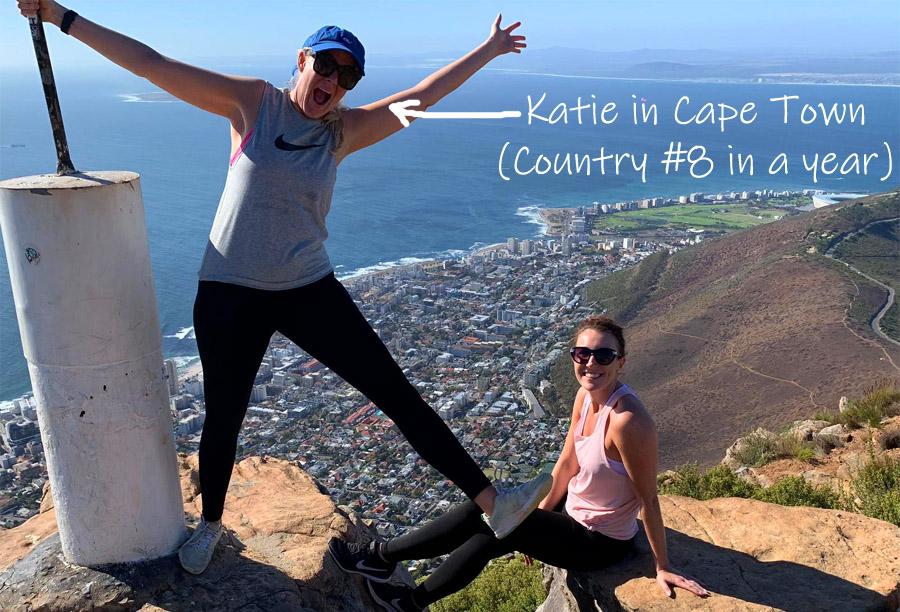
Sometimes real estate investors need to get creative with financing ideas.
A wrap around mortgage — also known as a wrap loan, overriding mortgage, carry-back, all-inclusive mortgage, or simply conjoining the words to wraparound mortgage — is (usually) a form of seller financing. A unique form, that leaves the original seller’s mortgage in place.
As you build your real estate investment financing toolkit, keep wrap around mortgages in mind as a more advanced technique that can make otherwise difficult deals work.
What Is a Wrap Around Mortgage?
In a wrap around mortgage, the seller doesn’t pay off their loan. Instead, they leave it open, and issue a new loan to the buyer that “wraps around” the original loan.
On the buyer’s side, the loan looks like any other type of seller financing. The seller provides them a loan, typically at a higher interest rate than conventional mortgages, and the buyer has a certain number of years to refinance or otherwise pay off the loan in full.
The difference from a traditional seller-financed mortgage lies on the seller’s side. Rather than pay off their existing mortgage and lend the entire new loan amount to the buyer, they leave their original mortgage open, and only lend the buyer the difference between the two.
And in so doing, they typically earn an interest spread, charging higher interest to the buyer than what they themselves pay to their lender. The new loan gets recorded on title in second lien position, after the original mortgage.
However, the new loan is not a second mortgage. The borrower pays interest on the full loan amount, not just the difference between the old mortgage balance and the new one.
Sound complicated? It’s not as complex as it sounds, and best illustrated with an example.
Wraparound Mortgage Example
Sally Seller and Brandon Buyer enter into a contract of sale for $200,000 on a rental property. Brandon has trouble qualifying for an rental property mortgage, and negotiates seller financing with Sally.
Sally has an existing mortgage at 5%, with a balance of $120,000. She requires Brandon to put down 10% ($20,000), and offers him owner financing for the remaining $180,000 at 8% interest.
Instead of paying off her $120,000 mortgage balance, she leaves it open and just lends Brandon the difference of $60,000. Which she doesn’t have to cough up out of pocket — it’s part of her proceeds from the property sale. In fact, Sally doesn’t have to come up with any money at all.
At 30-year amortization, Brandon Buyer pays Sally Seller a monthly principal and interest payment of $1,320.78 for his $180,000 mortgage at 8%. Sally’s existing mortgage payment is only $697.87 (for sake of example, I calculated it on an $130,000 original balance at 5%).
So, Sally earns a spread of $622.91 each month on the difference. On the $60,000 she lent, that comes to an effective interest rate of over 12%, since she’s earning an interest spread over her original loan, not just interest on the $60,000 she’s lending.
When Should Title Transfer in a Mortgage Wrap Around?
In a typical transaction, all liens get paid in full at the time of transfer. A wrap loan muddies the waters of when and how prior loans get paid off.
Buyers and sellers using a wrap around mortgage have a choice: they can either transfer title immediately and do a traditional settlement — and leave the old loan open — or they can enter into an installment contract where the title doesn’t transfer until after some future milestone.
In the case of the latter, the buyer doesn’t yet own the property. They are technically leasing the property with it under contract for a certain purchase price and legal transfer scheduled for a future date. It’s not ideal for the buyer, who could be evicted rather than foreclosed on by the seller, and lose all the money they’ve paid toward the installment sale.
But it works out well for the seller. They can enforce the installment contract far easier when they still legally own the property, and they can leave their old mortgage in place without worrying about the due-on-sale clause.
Which raises an important question: how do sellers get around the due-on-sale clause in their old mortgage note if they do opt to transfer the property immediately to the buyer?
Wrap Around Mortgages & The Due-on-Sale Clause
When you take out a mortgage loan, the note nearly always includes a due-on-sale clause. This requires the borrower to pay the loan balance in full when and if they sell the property.
Which makes it a direct violation to leave the loan open after selling.
Sellers can approach this in three ways. First, as outlined above, they can hold onto legal ownership of the property with an installment contract. The title doesn’t legally transfer to the buyer until they either qualify for their own mortgage or pay down the loan balance below a specified threshold, or some other milestone as negotiated by the buyer and seller.
Second, the buyer could assume the mortgage from the seller. Most conforming mortgages are not assumable; however, most USDA, VA, and FHA loans are assumable. Even for assumable loans, the process requires the lender’s permission, and the buyer must still qualify on their own merits. In this case, the buyer typically starts working directly with the lender, cutting out the seller from the transaction and eliminating any interest spread.
Third, sellers could just transfer title and hope their old lender doesn’t find out. They keep paying the monthly mortgage on time, and often lenders never discover that the property changed ownership. Of course, they risk the bank finding out and calling their loan, so they must be prepared to come up with the loan balance within 30 days if they try this approach.
Creative Ways Investors Can Use Wrap Around Mortgages
As an investor, consider the following ways you can use wrap loans to earn more money or to secure deals you wouldn’t have been able to do otherwise.
Wrap Mortgages As a Seller
As outlined above, sellers can use wrap around mortgages when offering owner financing.
Wrap loans serve sellers in two ways. They don’t have to cough up the money to pay off their old mortgage when offering seller financing, and they can earn a greater profit on interest through the interest spread between what they pay their lender and what they charge the borrower-buyer.
Plus, the seller can protect themselves even further by refusing to transfer title until some future milestone. To further our example above, Sally Seller might tell Brandon Buyer, “I’ll transfer title to you when you either pay the balance down to $120,000 or can qualify for your own mortgage to pay me off in full.” If Brandon defaults on his payments, Sally doesn’t have to go through the complex and expensive foreclosure process to recover her money. She simply retakes possession of the property through the eviction process.
Or, if the buyer wants to improve the property, such as following the BRRRR strategy, they can boost the property’s value and then more easily qualify for their own rental property mortgage.
Wrap Around Mortgages As a Buyer
Buyers who don’t qualify for a rental property mortgage can propose wraparound mortgages to the seller as a way to negotiate seller financing and salvage their deal.
If they don’t have much cash, they could negotiate that seller financing to buy with a smaller down payment in exchange for delayed title transfer. You could propose something like this to the seller:
“Lend me 90% of the purchase price instead of 80%, and we can structure the deal as an installment sale, where title doesn’t transfer until I pay down the balance to 80%.”
Right out of college, I worked for a real estate investor who was even craftier with wrap around loans. He approached homeowners in foreclosure, and offered to buy their homes and lease them back, with the option for the original owner to repurchase them. Upon purchase, he would leave their existing mortgages in place. Using this strategy to buy foreclosures, he only had to come up with their back payments and the closing costs. In other words, it was a way to buy properties without a down payment.
In other cases, he would refinance them — again using a wrap mortgage, leaving their existing loan in place. He’d charge them high interest for the full loan amount, earning a spread on the existing loan.
(article continues below)
Risks of Wrap Around Mortgages
As with any loan situation, the greatest risk with wrap loans is default.
Buyers who take out seller financing run the risk that the seller defaults on the existing mortgage. If that happens, the lender forecloses and the buyer loses their property, even though they’ve faithfully made their payments.
Sellers who offer owner financing and use a wrap around loan run the risk that the buyer defaults on their payments. That leaves the seller stuck paying the existing mortgage while they go through the lengthy and expensive foreclosure process to reclaim possession.
And, of course, sellers risk the original lender discovering the transfer, if they tried to hide it and the loan included a due-on-sale clause.
Buyers can protect themselves by demanding to make a portion of their monthly payment directly to the original mortgage lender. Sellers can protect themselves by structuring the deal as an installment sale that doesn’t transfer title immediately, but only after the buyer reaches pre-agreed milestones.
Final Thoughts
Real estate investors are always on the hunt for clever ways to lower their down payment. Or, for that matter, creative ways to get financing for otherwise difficult deals.
Sellers, meanwhile, are always on the lookout for ways to boost their profits on properties.
Wrap around mortgages can offer a way to close deals that might fall through. And a way for sellers to boost their earnings when they sell.
Still, wraparound mortgages do come with their own unique risks. Make sure you find a way to manage these risks, whichever side of the transaction you’re on!♦
Have you ever used a wrap around mortgage? What questions do you have about wrap loans?
More Real Estate Investing Reads:
About the Author

G. Brian Davis is a landlord, real estate investor, and co-founder of SparkRental. His mission: to help 5,000 people reach financial independence by replacing their 9-5 jobs with rental income. If you want to be one of them, join Brian, Deni, and guest Scott Hoefler for a free masterclass on how Scott ditched his day job in under five years.



























Thank you for the clarity in explaining this. I never really understood wraparound mortgages, this finally made it simple enough to get!
Thanks Will, glad it was useful for you!
Have been trying to figure out a wrap-around mortgages for a little while. This is very helpful!
Glad to hear it Jimmy!
Nicely and clearly explained. Thank you!
Thanks Sandar!
Creative financing is a wonderful skill to acheive. Clever!
Glad you got something out of the article Camille!
I’ve heard about wrap around mortgages before, but this finally made it clear. I would love to see a case study showcasing successful investments using wrap around loans to further my understanding.